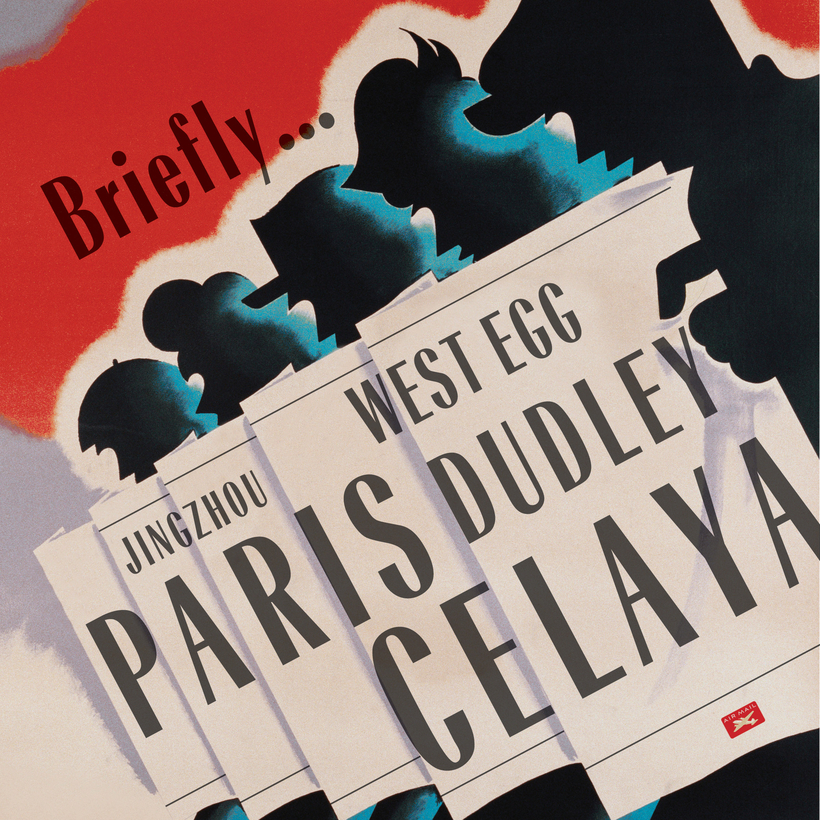In West Egg …
So we beat on …
Well, it’ll actually be somewhere else, reportedly New Orleans, Paris, and the battlefields of World War I—not Minnesota?—where readers will be able to get acquainted with Nick Carraway in the years before he ended up in West Egg. Nick, a prequel to The Great Gatsby concocted by Michael Farris Smith, will be published just a few days after the Fitzgerald novel enters the public domain, on the first of the year. And what does this news provoke in you? Excitement? Despair? Or a sort of tender curiosity, as Nick himself might put it? Borne back ceaselessly into the past, indeed.
In Paris …
C’est what?

Accent-based discrimination—la glottophobie—is now a criminal offense in France. While the prejudice—both regional and class-based, and directed, all told, at about half of France’s population—has been an issue for some time, a corrective had until recently proved elusive. But the French parliament has voted 98-3 to ban such discrimination, calling it “a form of racism.” The maximum penalty is three years’ imprisonment and a fine. It was President Emmanuel Macron’s appointment of Jean Castex (who is from the Southwest and sounds it) as prime minister, in July, that got the egalitarian ball rolling. “Christophe Euzet, MP for the Mediterranean port of Sète and lead sponsor of the bill, said that he was outraged by the way Mr Castex, a former senior civil servant and town mayor, had been mocked for his accent after Mr Macron appointed him,” reported The Times of London. “Mr Euzet, a native of Perpignan, shares Mr Castex’s sing-song speech, which more northern French associate with sunshine, pastis and pétanque.”
Yes, it’s a shock: Parisians accused of snootiness. Incroyable! But elite defenders of standard Parisian French are getting it from all sides these days, as Franglais, for instance, continues to make cultural inroads. (Le fake news, anyone?) Where might these upstart égalitaristes, hell-bent on imposing fairness and equality, turn their attention next? Maybe to the group most linguistically discriminated against by the Gallic culture. From P. G. Wodehouse’s The Luck of the Bodkins: “Into the face of the young man who sat on the terrace of the Hotel Magnifique at Cannes there had crept a look of furtive shame, the shifty hangdog look which announces that an Englishman is about to speak French.”
In Celaya …
Going deep
The underground tunnel, when it was discovered in this Mexican city, was found to be nearly 130 yards long, five-and-a-half-feet high, and equipped with air-conditioning and Wi-Fi. It ran from the basement of an empty house to—oh, how about that!—directly under the safe room of a secure-storage company holding an estimated $27 million worth of valuables. (How do you say “heist” in Spanish?) “Police named the Santa Rosa de Lima cartel, which primarily engages in the theft of fuel, as prime suspects,” reported The Times of London. “No arrests have been made.”
In Dudley …
Manufacturing interest?
Readers with heart disease, pacemakers, defibrillators, or high blood pressure might want to think twice before reading the next sentence. “An immersive experience from start to finish, Black Country Living Museum is an award-winning open air museum that tells the story of one of the very first industrialised landscapes in Britain.” Yeah, you get that frisson, too? But if your immediate reaction is Right—kilns, brass-casters, treadle-operated hammers, we know, we know, think again. Currently no museum in the world is more popular on TikTok than the Black Country Living Museum. The mostly young users of the service have signed on, apparently charmed by video clips featuring re-enactors in period clothes doing puzzling, industrious things, or, in one instance, strolling down ersatz historic Midlands streets to a K-pop song. Somehow it all works: 350,000 TikTok followers can’t be wrong.
In Jingzhou …
Towering achievement?
Apparently, even top-tier attractions such as 800-plus ancient tombs, the probable site of the Battle of Red Cliffs (208–9 A.D.), and Sui, a government employee who died 2,000 years ago but now resides in the city’s museum in a state of “unusually little decay,” weren’t enough: this Chinese city of more than 5 million felt it lacked a surefire tourist magnet. Something like, say, a 180-foot-tall bronze statue of the war god Guan Yu. Around $300 million ought to do it. And it did! The Hans Meilin–designed colossus, robes flowing, Green Dragon Crescent Blade at the ready, was unveiled in 2016.
Jumbo statues have become popular in China in recent years—Sphinxes, Buddhas, gods and goddesses, Mao, Marilyn. The latter, a 29-foot-tall, eight-ton, stainless-steel likeness of the actress in her dress-billowing-over-the-subway-grate pose from The Seven Year Itch—a copy of Seward Johnson’s Forever Marilyn—stood in Guigang for just six months before being consigned to a garbage dump in 2014. And now the massive Guan Yu statue must somehow, against all odds, make itself scarce. The Ministry of Housing and Urban-Rural Development has decided it violates local regulations (too tall, too expensive), that despite its “world’s largest bronze” billing it hasn’t brought the hoped-for revenue, and that it’s “ruined the character and culture of Jingzhou as a historic city.” In short, the government has ordered a “rectification.” Where that rectification will lead Guan Yu, and how, exactly, the 1,300-ton bronze will get there, is still unclear.
George Kalogerakis is a Writer at Large for AIR MAIL


